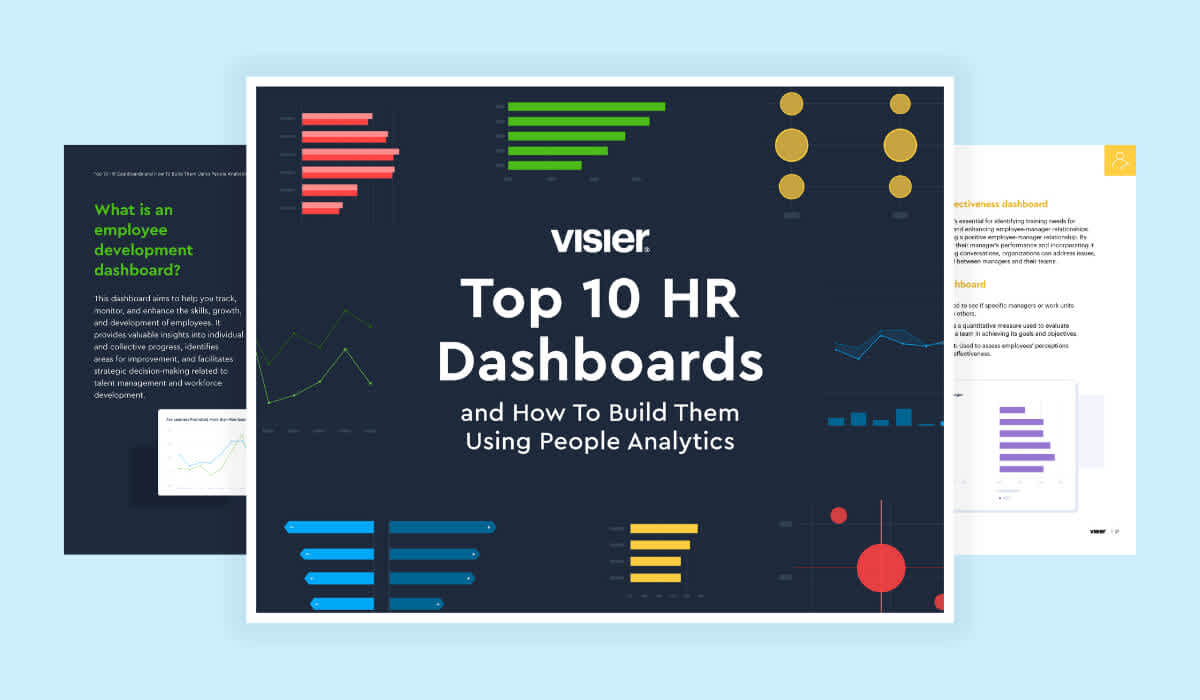What Is an HR Dashboard and How Can I Use It?
An HR dashboard is a visualization tool that helps report and review metrics related to your workforce and your business. Learn more.
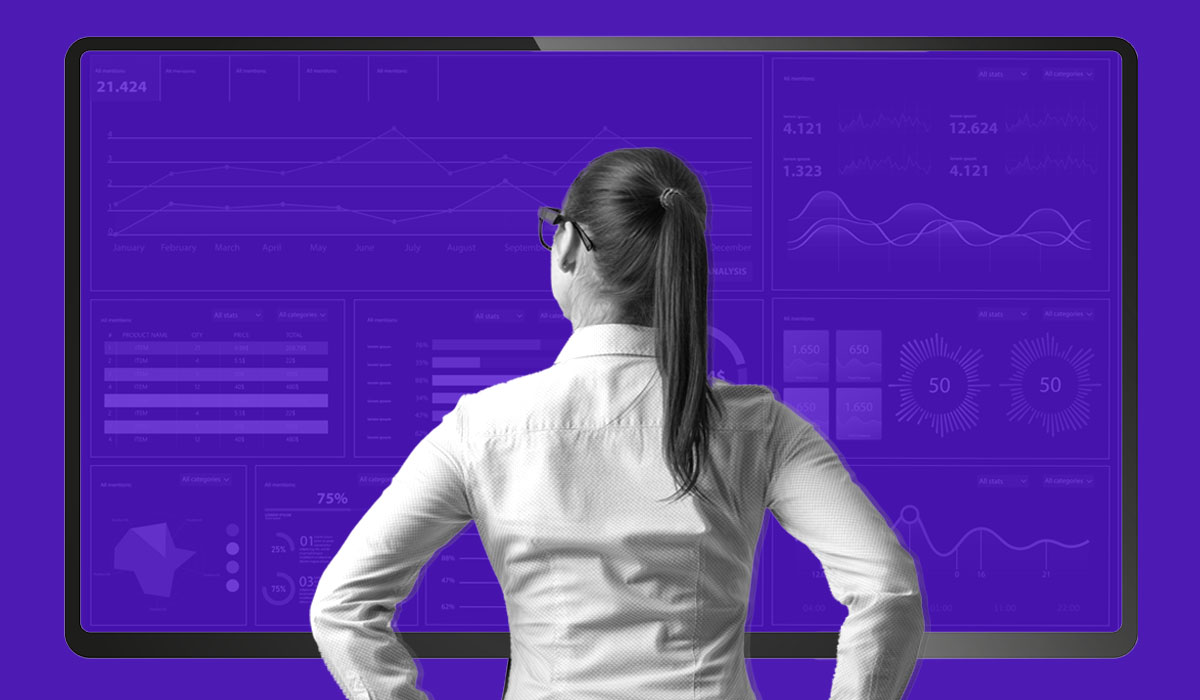
Collecting and analyzing data is the first step in a good talent acquisition strategy. Metrics and key performance indicators are great, but you need an easy way to visualize your results. An HR dashboard is a tool that takes all the data you care about and organizes it in a simple yet effective manner. With it, the human resources department can track, analyze, and report on the KPIs that matter.
An HR dashboard allows you to combine data from various systems. You can run comparisons, analyses, and more. The results include improved performance and people strategies, a well-organized work environment, and efficient recruitment strategies.
If you want to give HR dashboards a try but don’t know where to start, then this article is for you. We’ll talk all about how an HR dashboard can help and how it differs from an HR report. We’ll end with some examples to help you understand how to use it.

Why are HR dashboards important?
Picture this. You spend months collecting data relating to your employees and your business. You calculate metrics and KPIs, and create various charts and graphs.
But now you need to track all your findings. You need to run comparisons and other calculations. And maybe you want to analyze data from various systems all at the same time.
The answer is an HR dashboard. Reports have their place, as we’ll see in a moment. But a dashboard helps you compile all the data in a meaningful way. It is also much quicker and easier to use. In other words, it is perfect for those times when you want to present your findings or collaborate with colleagues.
Other benefits of using an HR dashboard include:
Keeping tabs on employee performance
Improving the compensation management system
Simplifying the employee management process
Improving the hiring process
What’s the difference between HR dashboards and HR reports?
An HR dashboard is a visual tool that helps you analyze data. The HR report is used to analyze the same data, but there’s no visual component—you’re simply putting the results on paper.
They both have their place in an HR strategy. For instance, if the data at hand is mostly static, or is not expected to change for long periods, a report may be the way to go.
But if the data is dynamic, a dashboard is a more efficient solution.
3 functions of HR dashboards
HR dashboards can serve a wide variety of purposes such as improving the recruitment process or tracking problem areas. Here are three of the most important functions.
1. Optimize human resources management
Tracking employee engagement, attrition, and performance is a must in any organization. HR dashboards can optimize this process. Through regular reporting, you can check the pulse of your workforce to see what’s working and what isn’t.
You can spot problems, as well as opportunities. For instance, you can pinpoint the best moment to introduce a new training. You can also track performance indicators for each employee.
Are there any indicators that someone could perform better in a different position? Could you offer a promotion?
Or on the contrary, did someone start performing poorly? An HR dashboard makes it easy to track when the issues started. You can see whether the problem is their knowledge, a lack of engagement and satisfaction, or something else entirely.
Plus, HR management isn’t only about performance. It can refer to things like equal opportunity and diversity. If you’re striving for more diversity in your company, for instance, an HR dashboard is an ideal way to see how things are going.
2. Track and analyze problems within the organization
Sometimes problems are inevitable. And how you react to them can make all the difference. Do problems go unnoticed or unattended until they leave a lasting impact on the business? Or are they addressed quickly?
An early response will minimize negative effects and will keep the company running smoothly.
For example, if you notice a certain department has high turnover rates, you can direct your retention efforts to that department alone. But you can also use the HR dashboard to compare that department to others where turnover rates are lower.
By doing so, you can notice different patterns that will help you retain more employees in your problem department.
3. Review and improve processes
An HR dashboard isn’t only for the human resources department. It can help managers and even the accounting department.
By reviewing information on things like the cost to hire, time to hire, attrition, or payroll processing features, the management team can focus their efforts on where it matters most. It can also spot processes that aren’t working as they should.
With an HR dashboard, you can also narrow down metrics. Not every dashboard needs to include every metric your company is tracking. By narrowing it down to the elements that matter for a certain area, you can focus on those things that will help improve various processes.

5 examples of HR dashboards
Now that we know what an HR dashboard is and how it can help, let’s take a look at a few examples.
1. Employee performance dashboard

Source: Visier
Employee performance is a metric every company needs to track. This example gives you a quick idea of how an HR dashboard can help you do that. It compares employee performance by different metrics such as by employee level and gender.
The KPIs vary for each organization. Some may choose to look at the overall labor effectiveness. Others might find it more useful to review data related to individual performance.
In other words, you can adjust the dashboard to fit your needs. Use it to review employee satisfaction, training, new hires, and more, and see how it all relates to their performance.
2. Workforce diversity dashboard
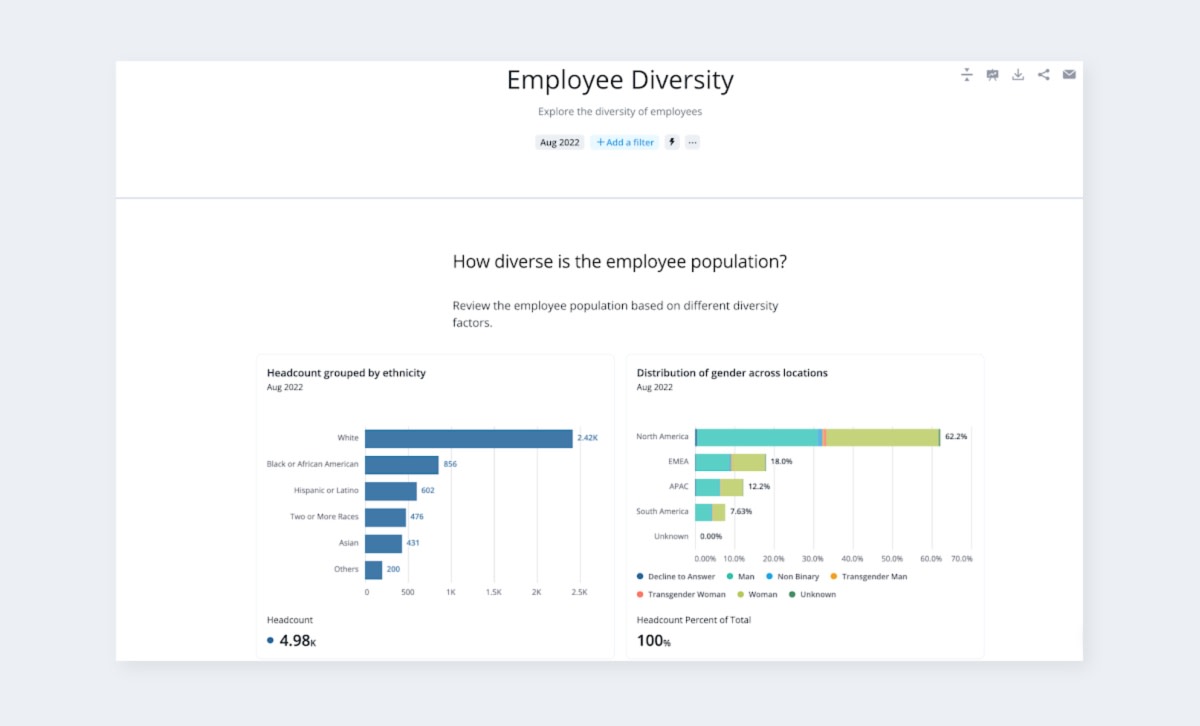
Source: Visier
A diverse workforce boosts creativity, improves the decision-making process, and brings more opportunities for growth. And what better way to review the diversity of your company’s workforce than through an HR dashboard?
This example breaks down employee ethnicity and country of residence. Like with the previous example, your own HR dashboard may look different. Perhaps all your employees are located in the same city. In this case, your diversity dashboard could look at ethnicity, gender, and compensation.
3. Executive HR dashboard
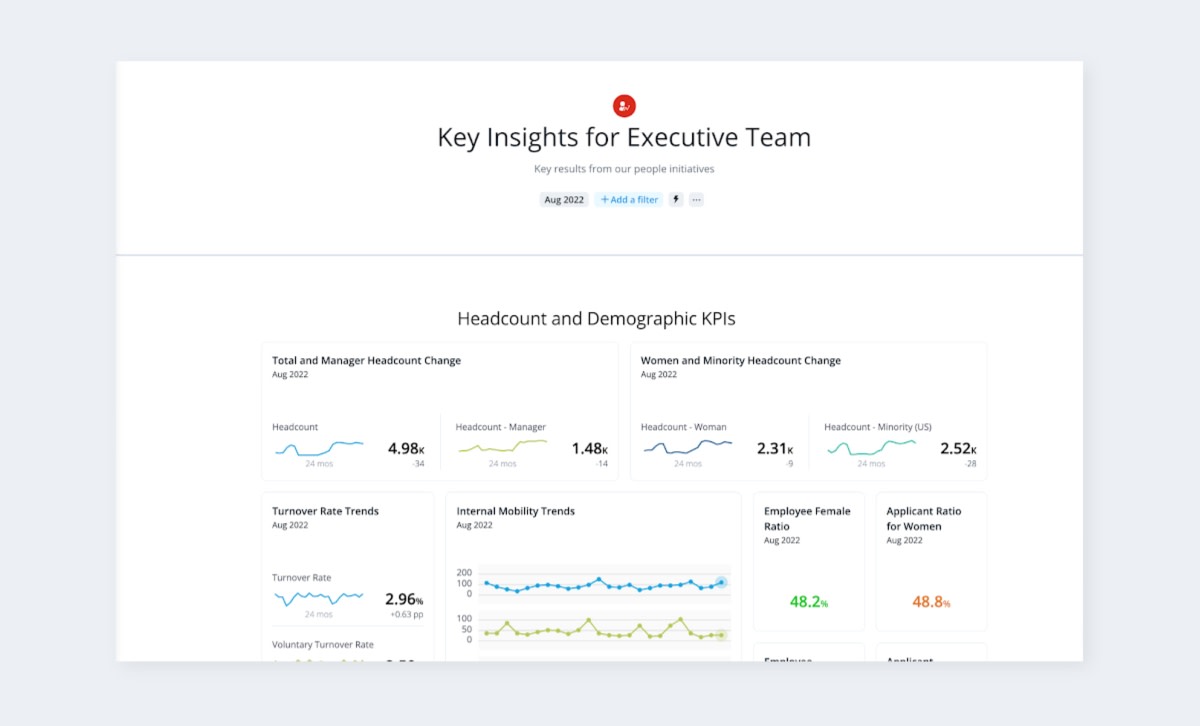
Source: Visier
Executive HR dashboards need to allow managers to quickly review the most important data. The current example compares headcount change by all employees and managers, along with data regarding gender ratio and turnover.
Certain data will vary based on your company. For example, you may want to look at employees across different countries.
4. Workforce demographics dashboard
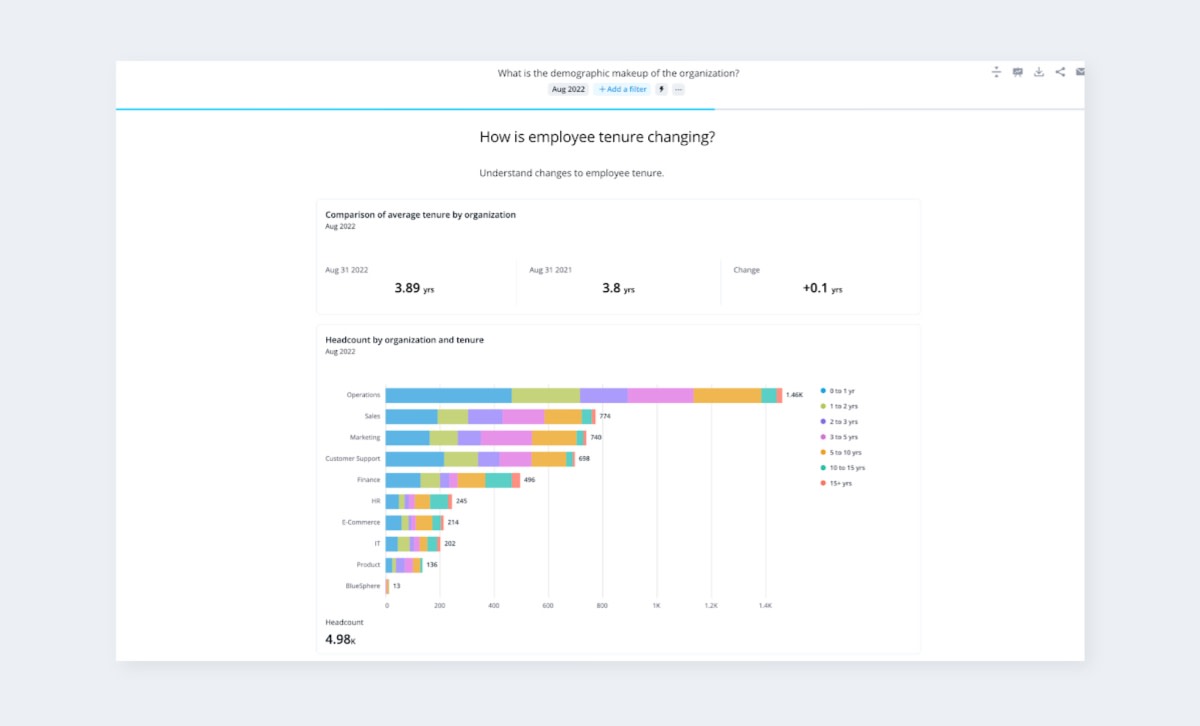
Source: Visier
Diversity is important, and so is data relating to demographics. This example analyzes data related to organization and tenure.
Like with all other dashboards, this one can also be adapted to your needs. View more or fewer data points regarding demographics and compare it to other metrics such as compensation or turnover rates.
5. Recruitment Dashboard

Source: Visier
The last HR dashboard example we’ll look at contains recruitment data. Hiring can be a costly process. That’s why it needs to be as effective as possible. Look at data such as:
Cost to hire
Offer acceptance rates
Withdrawal rates
Time to hire
You can also analyze the source of the leads. Are they coming through referrals? Did they find you through an ad? All this can help you understand how to improve your hiring process.

HR dashboards FAQ
What is an HR dashboard?
An HR dashboard is a visual business intelligence tool that helps HR teams track, analyze, and report on metrics and KPIs related to their workforce and organization. HR dashboards combine data from various HR systems, present it visually, and allow users to run comparisons and deep analyses to improve their business processes.
What are the main functions of an HR dashboard?
The main functions of an HR dashboard include:
Optimizing human resources management
Tracking and analyzing problems within an organization
Reviewing and improving HR and recruitment processes
What are the different types of HR dashboards?
Common types of HR dashboards include:
Employee performance dashboards
Workforce diversity dashboards
Executive HR dashboards
Workforce demographics dashboards
Recruitment dashboards
